Today, cloud computing has transitioned to become a mainstream technology, with many different types of cloud computing to choose from. An astonishing 94% of enterprises are estimated to be using at least one cloud service, according to the latest State of Cloud report.
And yet, the capacity for cloud growth remains exponential with an IBM-commissioned study reporting only 20% enterprise workloads currently running in the cloud. Having only migrated the simplest of workloads, enterprises have a long way to go on their cloud journey. With 80% of enterprise workloads still running on-premises, their migration would represent a potential quadrupling of the current cloud market.
Despite the cloud market’s maturity, many organizations are still unaware of the cloud computing services and deployment models available. New cloud products and services arrive almost daily, driven by the constant innovation of tech leaders including Google, Amazon, and Microsoft.
To help you navigate the complexities of cloud computing, we’ll be taking an in-depth look at the types of cloud computing available. We’ll also shine a light on some of the most popular cloud services, including some emerging technologies gaining traction.
What Are the Main Types of Cloud Computing?
At the highest level, cloud computing is delivered through a combination of service and deployment models. Within each of these cloud delivery models there are three types of cloud computing and as a service -aaS offerings to choose from.
Let’s explore them in detail.
- Infrastructure as a Service (IaaS)
- Platform as a Service (PaaS)
- Software as a Service (SaaS)
- Everything as a Service (XaaS)
Cloud Computing Service Models
There are three main cloud computing service models – Infrastructure as a Service, Platform as a Service, and Software as a Service. Each service model represents a different part of the cloud computing stack and comprises its own unique division of responsibility between you and the service provider.
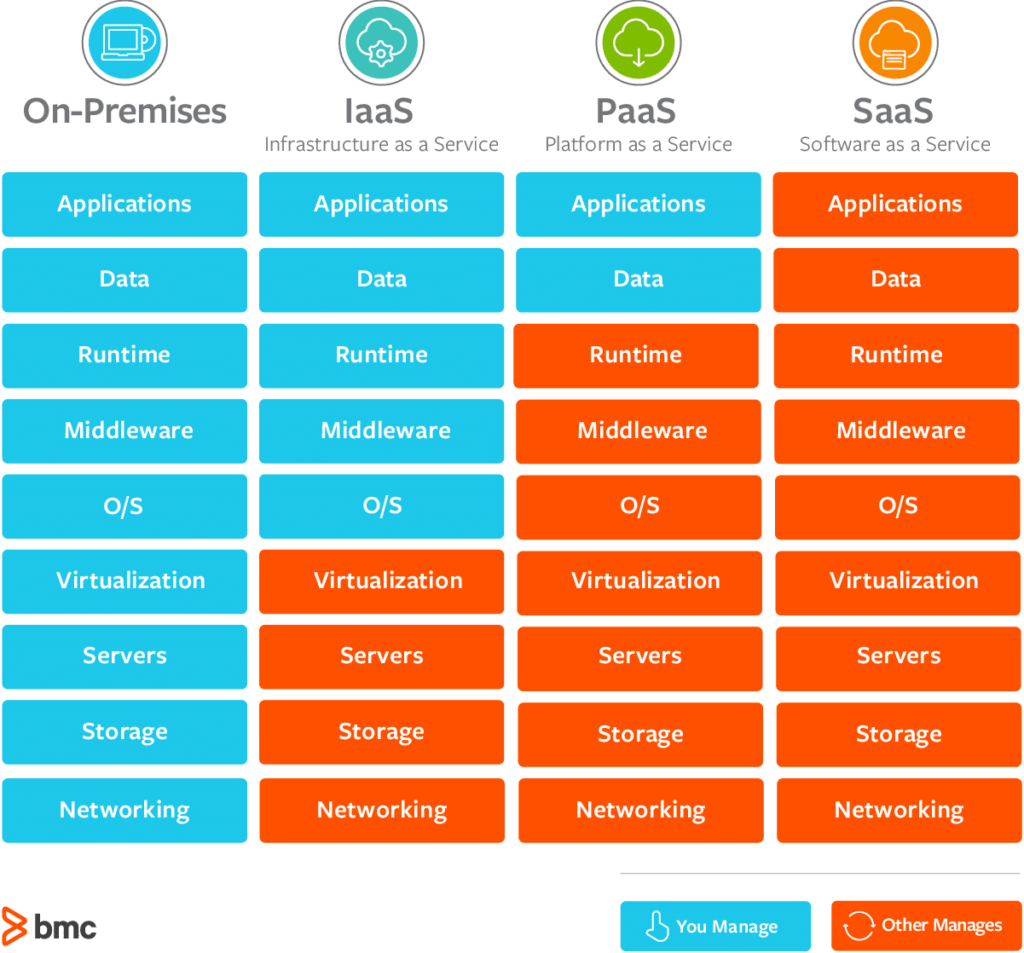
Within each cloud computing service model, there are 100s of different cloud service options to choose from – which we will explore later in the post. For now, let’s take a closer look at the three main service models.
Infrastructure as a Service (IaaS)
Infrastructure as a Service (IaaS) is the service model that forms the foundation for your cloud technology deployment. Through an IaaS provider, you gain on-demand access via the internet to core IT resources including computers (virtual or dedicated hardware), networking, and storage.
IaaS provides you with access to a flexible state-of-the-art hardware resource that can be scaled to meet the processing and storage needs of your business. You utilize this infrastructure to provision your organization’s applications, software, and platforms – free from the responsibility of managing and maintaining it.
A typical example of an IaaS deployment will combine virtual machines and storage disks. With each individual element customized to meet the needs of your business whether it’s the Server OS or the size of the capacity of storage.
Platform as a Service (PaaS)
Platform as a Service (PaaS) is the cloud service model where you access combined hardware and software tools through a service provider. PaaS is most commonly used for application development.
A PaaS provider gives you access to the combined cloud infrastructure required for application development – databases, middleware, operating systems, servers – without the underlying complexity of managing it. This allows you to become more efficient. Instead of spending time installing and configuring infrastructure, you are instead focussed solely on developing, running, and managing applications.
Software as a Service (SaaS)
Software as a Service (SaaS) is the cloud service model that provides you access to a completed software product, run and managed by the service provider. Most SaaS solutions tend to be end-user applications.
Accessing your chosen software using a SaaS model frees you to focus solely on how to best utilize that software. With the SaaS provider responsible for providing, maintaining, and upgrading the software – including the underlying infrastructure.
A common SaaS example is a web-based customer relationship management (CRM) solution. You store and manage all your contacts via CRM without having to upgrade the software to the latest version or maintaining the server and operation system the software is running on.
The traditional cloud service model pillars – IaaS, PaaS, SaaS – have grown over the years to encompass such a vast array of additional offerings that we are now entering an era of ‘Everything as a Service’.
Let’s take a look at it for a moment.
Everything as a Service (XaaS)
Also referred to as Anything as a Service, the XaaS acronym is a general term that encompasses the vast range of products, tools, and technologies which are emerging as new and popular as a Service offerings.
The explosion of these new services – and associated acronyms – has reached such a level that -aas directories now exist simply to keep track. Each of these cloud service model iterations is a potential multi-billion dollar industry in its own right. The most popular services including Desktop as a Service (DaaS), Artificial Intelligence as a Service (AIaaS), and Unified Communications as a Service (UaaS).
Cloud Computing Deployment Models
Once you have selected your chosen cloud service(s) you have the option of three main cloud computing deployment models: public cloud, private cloud, and hybrid cloud.
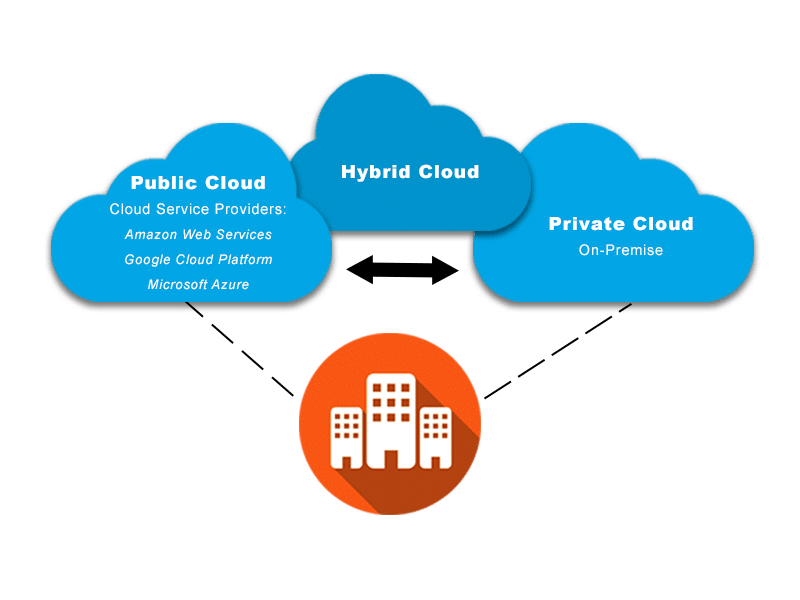
Like cloud service models, each cloud deployment model has its own unique setup with a range of differing requirements and associated benefits.
Suggested read: The Many Benefits of Cloud Computing
Let’s look closer:
Public Cloud
Public cloud is the provision of computing services over the public internet by a third-party provider. Public cloud services are available to anyone who wants to use them and can be free or paid to use.
In a public cloud deployment, the responsibility for the management and maintenance of the systems falls directly to the provider. Although public and private cloud architecture can be identical, there may be significant differences in the security requirements of each cloud deployment.
A public cloud deployment model removes the expensive upfront costs of purchasing, managing, and maintaining on-premises hardware and software infrastructure. It also offers rapid deployment and almost infinite scalability thanks to the sheer size of public cloud technology providers Google, Microsoft, and Amazon.
Private Cloud
Private cloud is the provision of computing services for a single organization access over the internet or a private internal network. A private cloud can be managed internally or by a third-party provider.
A private cloud deployment will offer you many of the same benefits of public cloud, including self-service and scalability. When compared to public cloud, you will also have greater control and customization of the services you consume within your private cloud. This means you can implement a higher level of security and privacy – ideal if you’re operating in an industry where compliance is a requirement.
However, these additional benefits come at a cost. With most deployments, the responsibility for cost and accountability of managing the private cloud will remain with your IT department. This means private clouds are slower to deploy and carry the same expenses – staffing, management, maintenance – as traditional data center ownership.
Hybrid Cloud
Hybrid cloud is the provision of computing services through a combination of public cloud and private cloud deployments. This type of deployment allows the sharing of data and applications between both cloud environments.
Hybrid cloud offers you the capability to seamlessly scale resources from on-premises private infrastructure up to the public cloud to meet fluctuations in processing computing demands. This allows you to utilize public cloud resources for non-sensitive computing tasks while keeping sensitive business-critical applications secure within a private cloud deployment.
Used effectively, a hybrid cloud deployment allows you to scale and meet spikes in short term resource demand without the requirement for long term investment. Hybrid computing is a platform that offers the ‘best of both worlds’, giving you access to the full range of cloud computing benefits – flexibility, scalability, and cost efficiencies paired with the lowest possible risk exposure.
Other Cloud Deployment Models
In addition to the three most common cloud deployment models and the hybrid one, there are other lesser-known deployment options:
Community Cloud
A type of cloud deployment model built on the shared infrastructure of several organizations with a common concern. Community clouds are popular as they further split the resource costs between the organizations involved.
Distributed Cloud
This type of cloud deployment is formed from a group of machines distributed across various locations but connected to a single network. It can be created as a public resource or created using volunteered resources.
Multicloud
Multicloud is the deployment of a single disparate cloud deployment which combines multiple cloud service providers (not to be confused with hybrid cloud). Opting for a multicloud approach reduces your reliance on a single service provider while offering increased flexibility through greater choice.
Poly Cloud
This is the combination of cloud deployments from multiple service providers to leverage specific services. Differing from the purposes of multicloud, poly cloud allows you to achieve more than you could using a single provider.
HPC Cloud
This is a specific cloud deployment model designed to facilitate high-performance computing (HPC) applications. You would use an HPC cloud deployment for performing large scale research or solving advanced problems.
How Many Types of Cloud Services Are There?
Within each of the cloud service models, there are hundreds of different cloud services to choose from. Your choice of available cloud services continues to expand almost weekly.
Driven by the migration of traditional on-premises services to cloud and constant technological innovation which sees new cloud-native services emerge.
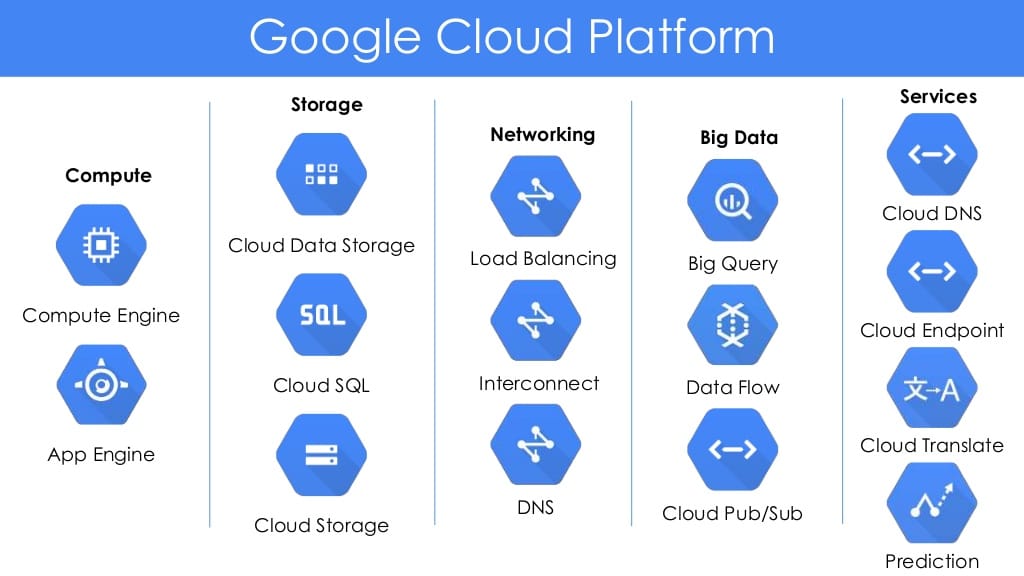
Your choice of the cloud service provider will directly influence the range of cloud services you can choose from. The three leading cloud service providers – Google Cloud, Amazon Web Services, and Microsoft Azure – offer you a vast range of services to meet your computing needs.
Of course, all this choice can be overwhelming and it’s often difficult to understand the different types of cloud services available. To help you begin to understand and navigate this complex technological cloud computing ecosystem, we’ve explored the core and emerging cloud service categories and their associated cloud services.
Core Cloud Service Categories
Below are the cloud service categories which include the core services you would utilize in a traditional on-premises deployment.
Cloud Compute Services
Compute services in the cloud are the foundation infrastructure upon which you build and run your organization’s technology. Virtual machines (VM) will form the core of your compute service.
Cloud service providers offer a vast array of VM options that will run any workload you can imagine. Every aspect of your VM can be configured to meet the unique compute requirements of your business – operating system, number of cores, location, attached storage. This includes scaling the number of VM instances you require on any given day to meet your ever-changing compute requirements.
Cloud computing also includes services like server migration, container management, and serverless computing. Below are the main cloud computing services available from the three leading cloud service providers:
- Google Cloud – Compute Engine, Migrate for Compute Engine, App Engine, and more
- Amazon Web Services – Amazon EC2, Amazon Elastic Container Service, Amazon Lightsail, and more
- Microsoft Azure – Virtual Machines, Container Instances, App Service, and more
Cloud Networking Services
Your network is another foundation pillar in your infrastructure. The networking infrastructure of your chosen cloud service provider will directly determine the level of security, availability, speed, and reach of your cloud services.
The leading cloud service providers will offer you access to a global network of regions and locations. Each constantly striving to improve their networking infrastructure to provide better bandwidth and faster download times.
Cloud networking most commonly encompasses the following services:
- Content Delivery Network (CDN) – a way to deliver content through multiple geographic locations to deliver high speed and low latency
- Dedicated Interconnection – direct access to the cloud providers high-speed network
- Domain Name System (DNS) – a scalable way to route users to internet applications via DNS
- Load Balancing – a tool to distribute incoming traffic across multiple resources
- Virtual Private Network (VPN) – a secure and isolated cloud resource
Google Cloud Platform is unique, also offering the provision of an additional Premium Network Tier. This gives you access to Google’s high performance, low latency, highly reliable global network.
This can impact the quality of your cloud service delivery – like website speed which directly impacts user experience, engagement, and even sales.
We understand the importance of a great network, which is why Kinsta utilizes Google Cloud Platform’s premium tier for all of our customers.

Below are the main cloud networking services available from the three leading cloud platform providers:
- Google Cloud – Virtual Private Cloud (VPC), Cloud DNS, Cloud CDN, Cloud Load Balancing, and more
- Amazon Web Services – Amazon VPC, Amazon Route 53, AWS Direct Connect, Elastic Load Balancing, and more
- Microsoft Azure – Azure Virtual Network, Azure DNS, Azure Content Delivery Network, Azure Load Balancer, and more
Cloud Storage Services
Storage in the cloud involves utilizing a cloud service provider’s infrastructure to securely store your data, apps, and workloads.
Much like the customization of VMs, cloud service providers offer you multiple storage configuration options that can be scaled to match the demands of your business – disk size, amount of storage, and location. They will also support the different storage types including block, file, and object storage.
Certain cloud service providers also offer a range of data transfer services to help you quickly and securely migrate vast volumes of data into their infrastructure.
Below are the main cloud storage services available from the three leading cloud platform providers:
- Google Cloud – Cloud Storage, Persistent Disk, Cloud Filestore, Data Transfer Services, and more
- Amazon Web Services – Amazon EBS, Amazon EFS, Amazon S3, Data Transfer Services, and more
- Microsoft Azure – Disk Storage, File Storage, Blob Storage, and more
Cloud Security, Identity, and Compliance Services
Security, identity, and compliance in the cloud comprise of a range of tools and services designed to control access to your cloud infrastructure, protect against attacks, and maintain privacy of your data.
The most common and critical cloud security services include:
- Auditing – a tool track all user activity and create an audit log of who did what, where, and when within your cloud platform.
- Compliance – a series of tools and controls to help you track and maintain regulatory compliance.
- DDoS Protection – a tool designed to identify and mitigate DDoS attacks in order to prevent application downtime and minimize the latency of your infrastructure.
- Encryption – the provision of encryption at rest and in transit to prevent your data from being accessed even in the event of theft.
- Firewalls – a collection of firewall tools to filter malicious web traffic and centrally manage firewall rules.
- Identity and Access Management – a platform to manage user identities and control who has access to what, and what they can do with that access
- Threat Detection – a tool to identify potential threats in cloud environments.
Below are the main cloud security services available from the three leading cloud platform providers:
- Google Cloud – Cloud IAM, Cloud Audit Logs, Cloud Security Command Center, and more
- Amazon Web Services – Amazon Cognito, AWS Shield, AWS Security Hub, AWS Firewall Manager, and more
- Microsoft Azure – Azure Active Directory, Key Vault, Azure Security Center, and more
Read up on the Latest Cloud Security Trends from G2.
Cloud Analytics Services
Analytics in the cloud comprises a range of tools and frameworks to help you analyze and extract valuable insight from your data (think of Google Analytics for cloud services). The availability and sophistication of cloud analytics services continues to expand as Big Data becomes increasingly critical to businesses.
The main cloud service providers offer a range of cloud analytics services to help you store, process, analyze, and visualize data.
We understand the importance of analytics software and the positive impact it can have across your business. Our analytics platform, MyKinsta Analytics, gives you the visibility of the website performance data you need to quickly investigate and troubleshoot any issues. Making sure your WordPress site – your main sales tool – is at peak performance.
The main cloud provider platforms also offer deep integration with open source analytics tools like Apache Spark and Apache Hadoop.
Below are the main cloud analytics services available from the three leading cloud platform providers:
- Google Cloud – BigQuery, Cloud Dataflow, Google Looker Studio, and more
- Amazon Web Services – Amazon Athena, Amazon EMR, Amazon Redshift, and more
- Microsoft Azure – Data Lakes Analytics, HD Insight, Azure Synapse Analytics, and more
Cloud Database Services
Database services in the cloud offer the provision of purpose-built databases you can scale to meet demand with compute and storage resources you can adjust. Cloud databases are fully managed, leaving you free to input, analyze, and utilize your data without the need to consider the underlying infrastructure.
Cloud service providers have expanded to offer a range of relational and non-relational (NoSQL) databases to house your different data needs. Giving you a depth of choice – even within the subcategories – with options including MySQL or Kinsta’s database of choice, MariaDB.
Whether you need an everyday SQL Server database for traditional applications (CRM, ERP, etc.), or wide column database to support a high scale industrial app, you can find it in the cloud.
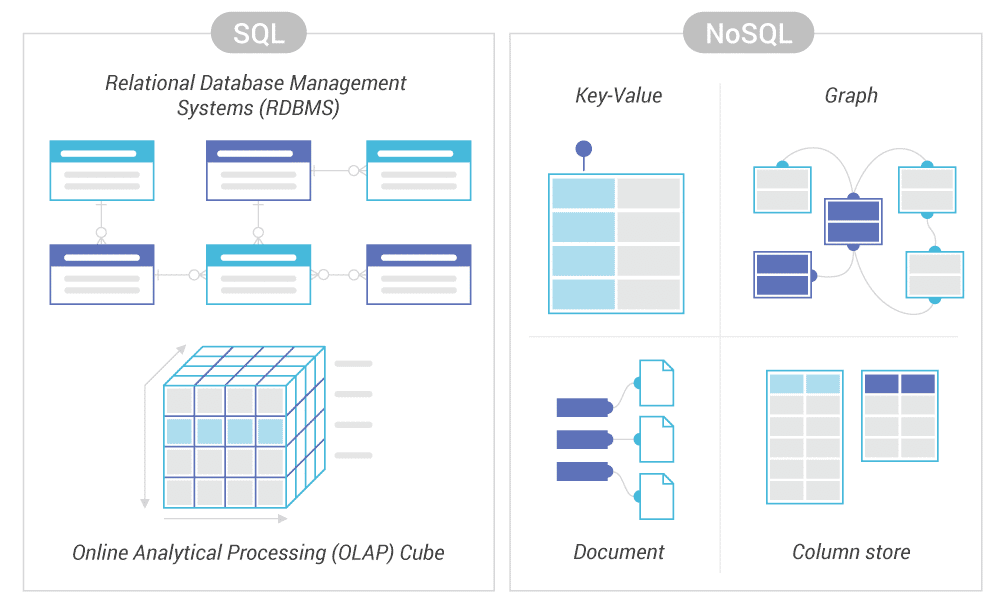
Below are the main cloud database services available from the three leading cloud platform providers:
- Google Cloud – Cloud SQL, Cloud Bigtable, Cloud Spanner, and more
- Amazon Web Services – Amazon RDS, Amazon DocumentDB, Amazon Managed Apache Cassandra Service, and more
- Microsoft Azure – Azure SQL Database, Azure Cosmos DB, Azure Database for MySQL, and more
Emerging Cloud Service Categories
Alongside the services needed to build your core infrastructure for everyday business, there exists an increasingly popular series of emerging cloud service categories.
These emerging cloud services have evolved to meet technological innovations and tend to be cloud-native rather than traditional on-premises solutions.
Below, we have explored the three most popular emerging cloud service categories:
AI and Machine Learning Cloud Services
Cloud has unlocked artificial intelligence (AI) and machine learning tools for all businesses. AI and machine learning cloud services allow you access to affordable off-the-shelf solutions you can quickly configure, without the large-scale investment in infrastructure that would otherwise be required.
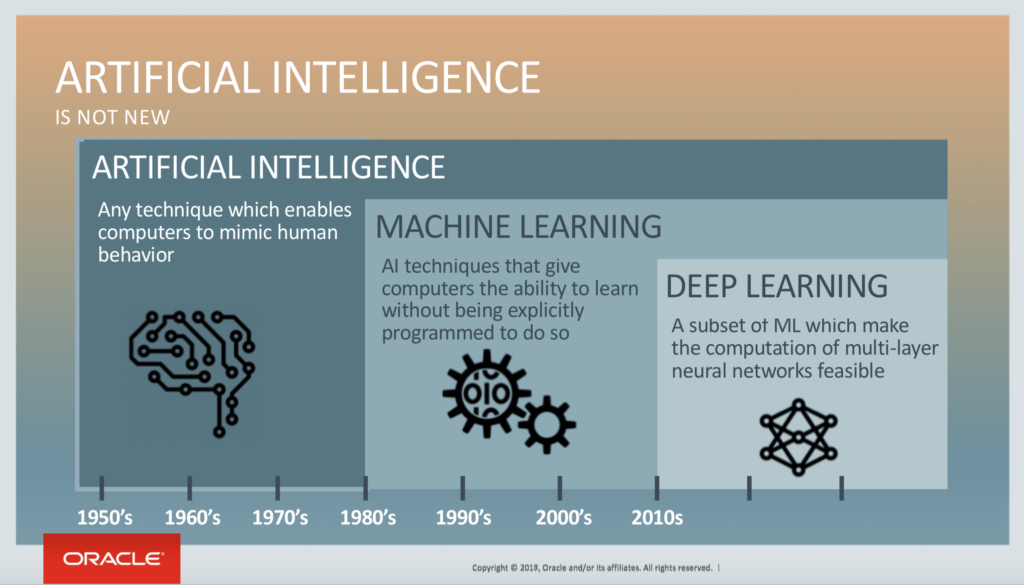
There are AI and machine learning services available for a wide range of services. Originally utilized to extract insight from an explosion size and complexity of data, businesses are waking up to the application of AI and machine learning services to implement a range of alternative uses across customer service, marketing, and sales departments.
Below are some increasingly common AI and machine learning uses being supported by associated cloud services:
- Chatbots – combining machine learning and AI to deliver innovative chatbots that can be used in a live chat to handle a range of customer service and sales scenarios.
- Recognition – combining machine learning and AI for recognition of images and speech.
- Speech to Text – using machine learning and speech recognition to convert audio files into text to deliver rapid transcription and convert unstructured data into an analyzable format.
- Search – using machine learning tools to index and provide comprehensive and content-rich search results from documents, images, videos, and the web.
- Translation – using machine learning tools to recognize and then translate speech or text files.
Below are the main cloud AI and machine learning services available from the three leading cloud platform providers:
- Google Cloud – AI Platform, Vision AI, Speech-to-Text, and more
- Amazon Web Services – Amazon Comprehend, Amazon Polly, Amazon Translate, and more
- Microsoft Azure – Azure Bot Service, Bing Custom Search, Machine Learning Studio, and more
Blockchain
Blockchain technologies exploded onto the scene in the past 3-5 years. In the simplest of terms, a blockchain is a series of time-stamped immutable records of data – often transactions – that is managed by a cluster of computers that are not owned by a single entity.
Each data block is secured and bound to others using cryptographic principles (i.e. chain).
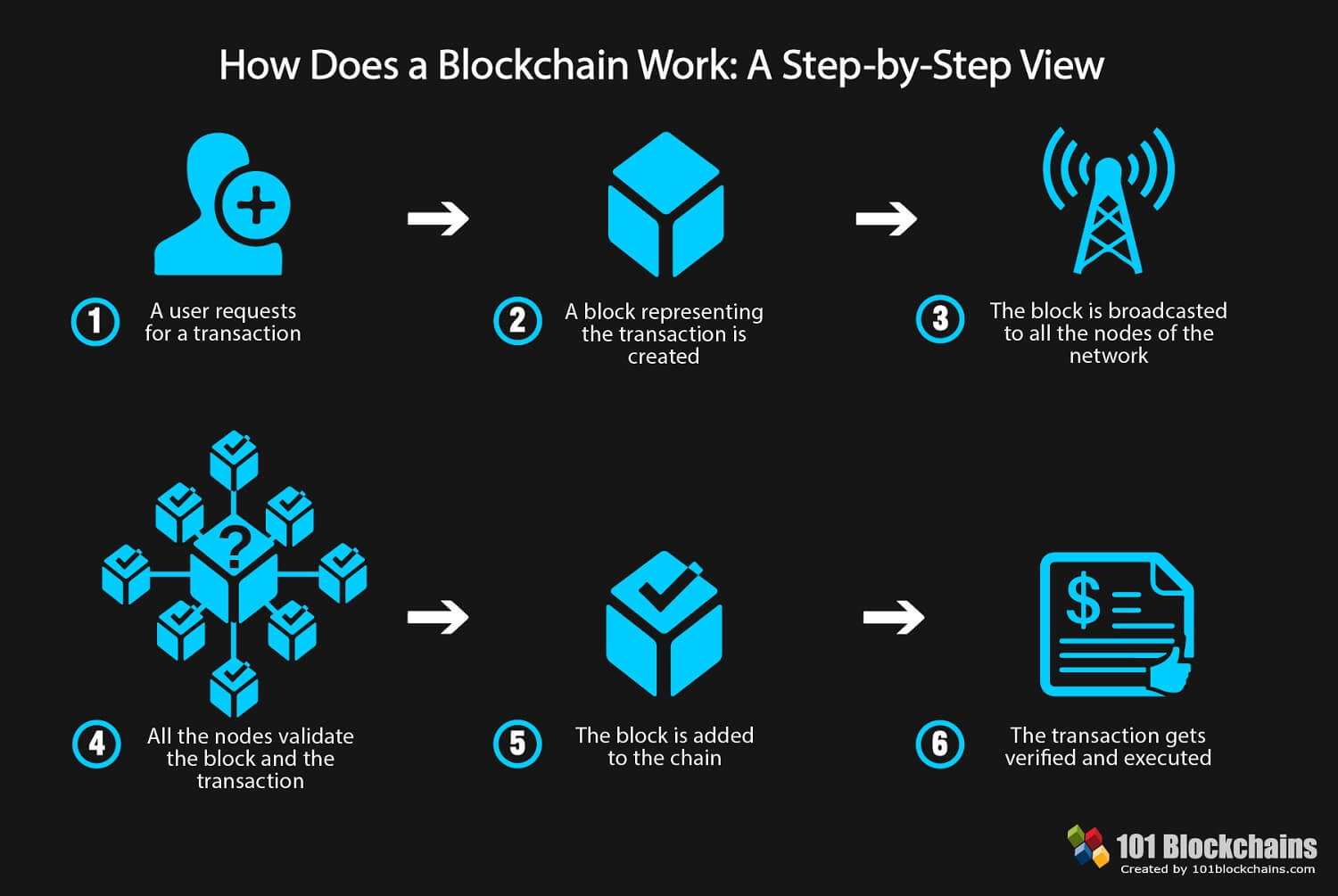
Cloud providers have since released a range of services to organizations to build and manage their own blockchains. These typically span cryptography, large scale ledger databases, or a fully managed blockchain service.
Below are the main cloud blockchain services available from two of the leading cloud platform providers:
- Amazon Web Services – Amazon Managed Blockchain and Amazon Quantum Ledger Database (QLDB)
- Microsoft Azure – Azure Blockchain Service, Azure Blockchain Workbench, and Azure Blockchain Tokens
Internet of Things (IoT)
The evolution of devices to include internet connectivity has given rise to the Internet of Things (IoT). Today, the IoT network spans billions of devices in homes, cars, factories, hospitals, and countless other places.
If you’re using IoT devices – especially at scale – you’ll need solutions to connect and secure them. As well as collecting, storing, and analyzing the data they produce.
Cloud providers offer a growing range of IoT services to support you in this endeavor. This means you can build IoT solutions for almost any use case across the breadth of available devices.
Below are the main IoT available from the three leading cloud platform providers:
- Google Cloud – Cloud IoT Core and Edge TPU
- Amazon Web Services – AWS IoT Core, AWS IoT Button, AWS IoT Analytics, and more
- Microsoft Azure – Azure IoT Hub, Azure IoT Central, Azure IoT Edge, and more
Summary
The cloud offers you countless infrastructure, platform, and software as a service solutions. All of which you can choose to deploy in a public, private, or hybrid solution. Your business is unique, and so it’s important you take the time to understand each of the available solutions and which setup is right for your business.
This constant state of evolution will give you opportunities almost daily to trial new solutions, or identify technologies that can take your business to the next level.
If you’re looking for WordPress website hosting, you should strongly consider Kinsta as your partner of choice. Our platform is powered by the Premium Tier of the Google Cloud Platform and we handle the hassle of moving with our free migration service.



Assuming that somebody asks me what distributed computing is, I make an effort not to get stalled with definitions. I let them know that, basically, distributed computing is a superior method for maintaining your business.
Line-of-business pioneers wherever are bypassing IT divisions to get applications from the cloud and paying for them like they would a magazine membership. Take a look at this page on TwoFeld Tech LLC